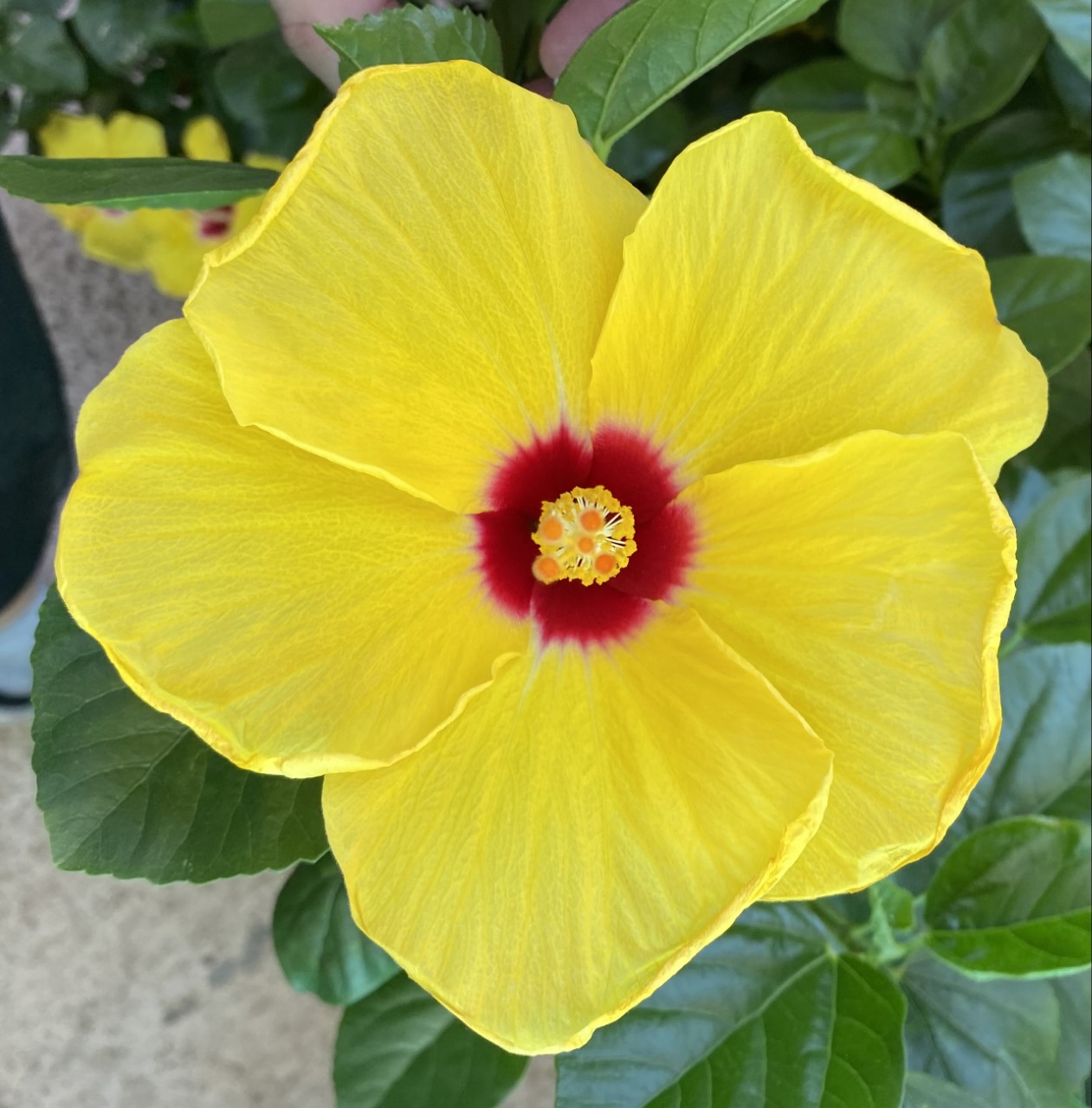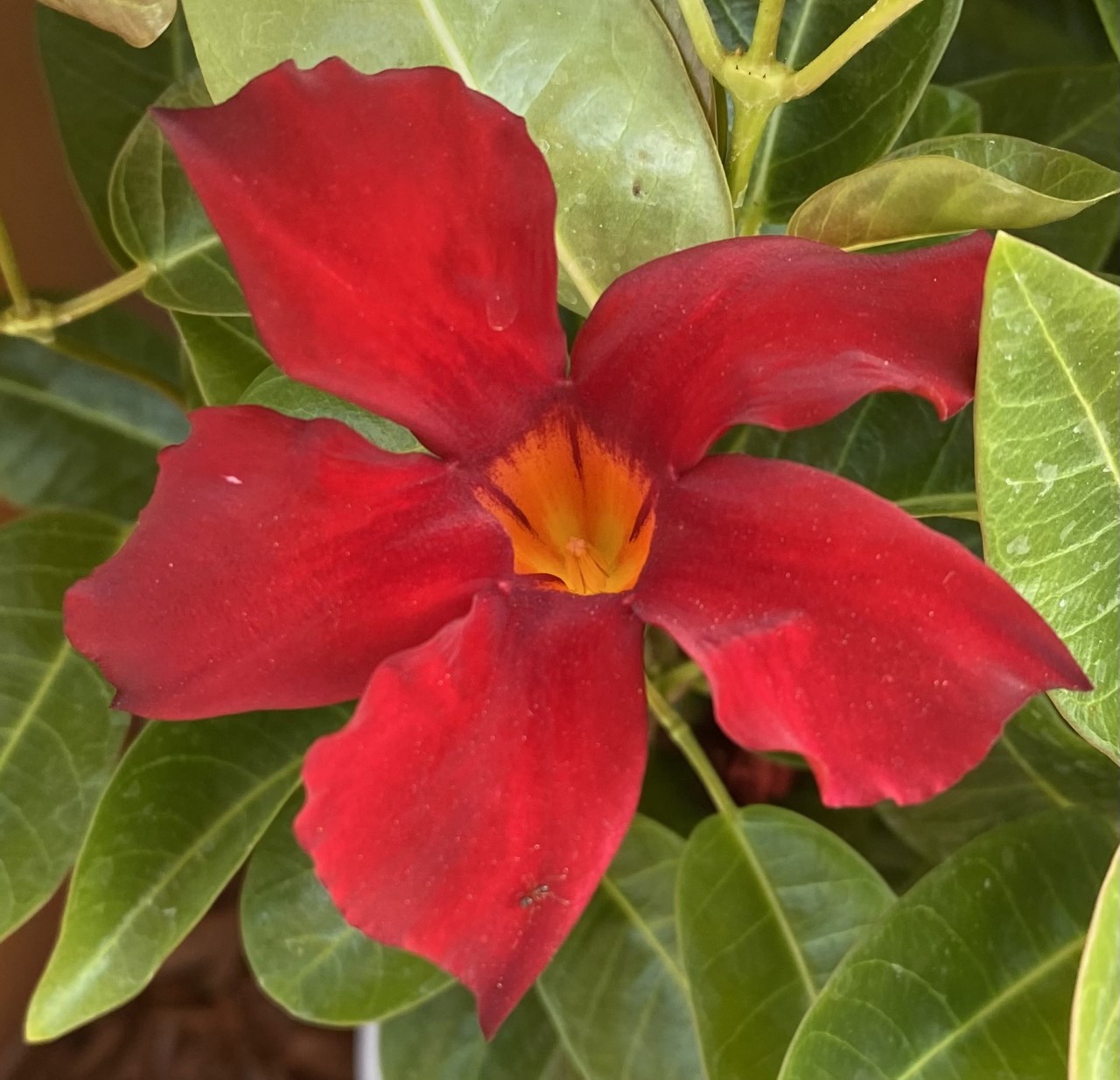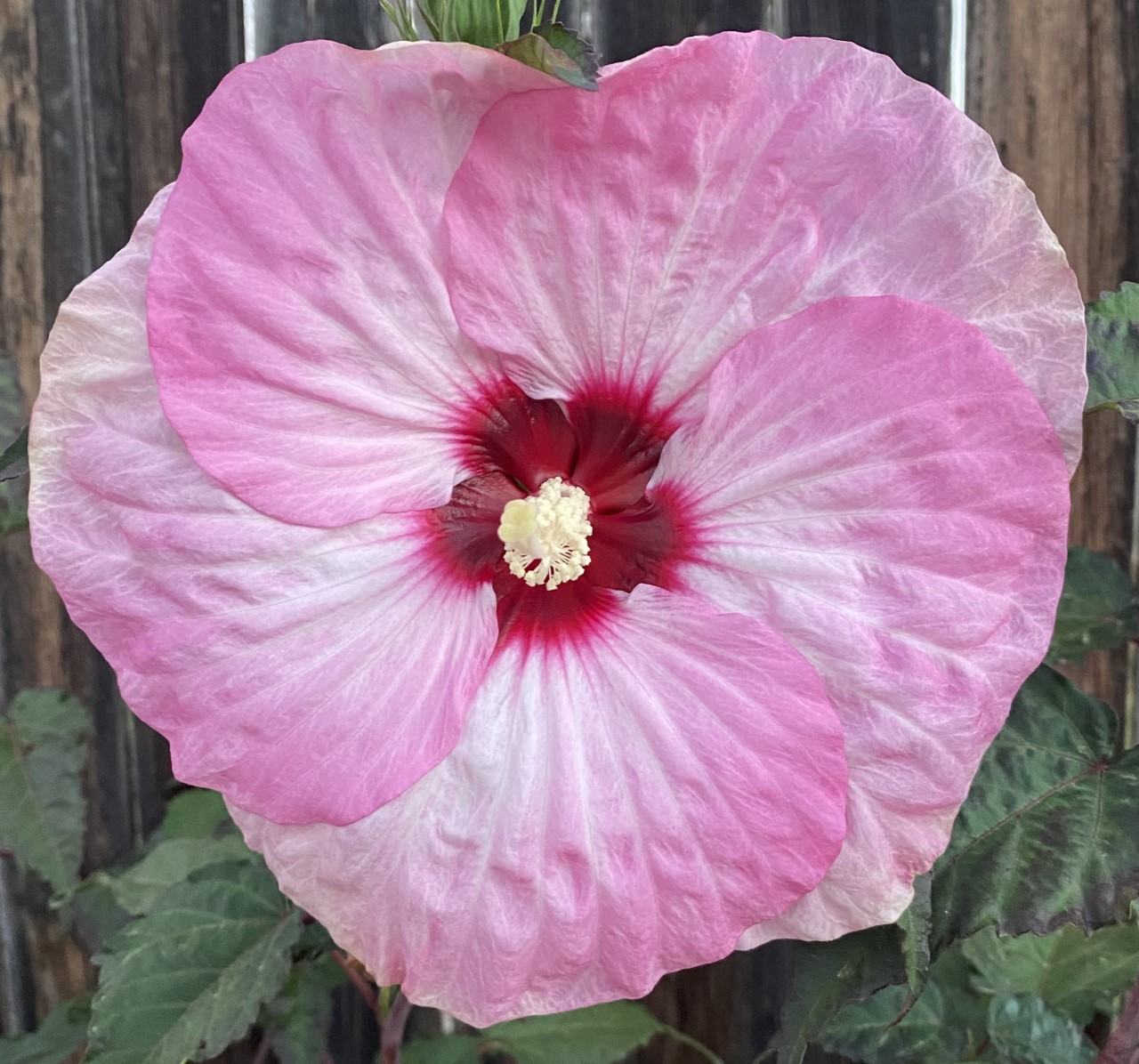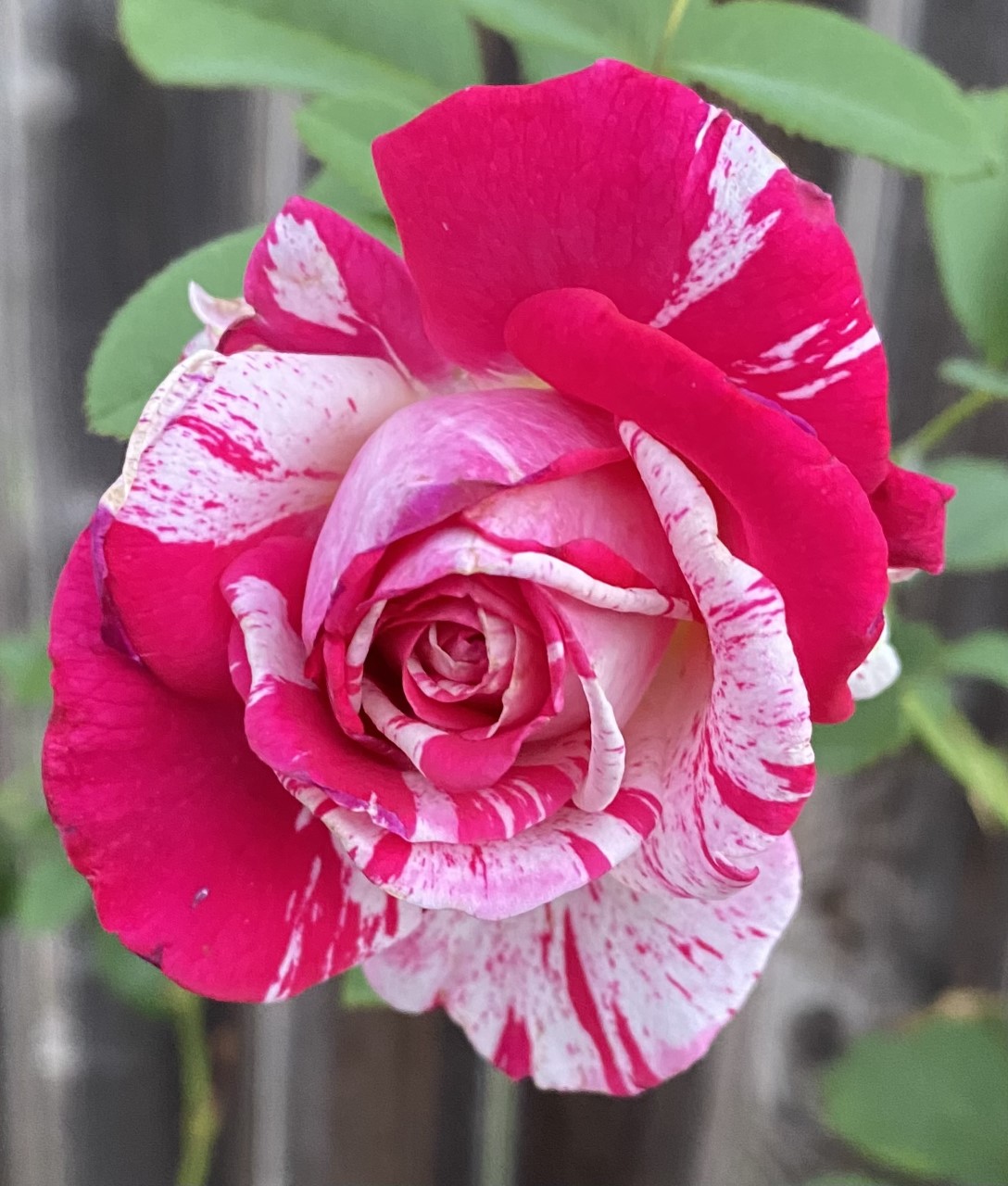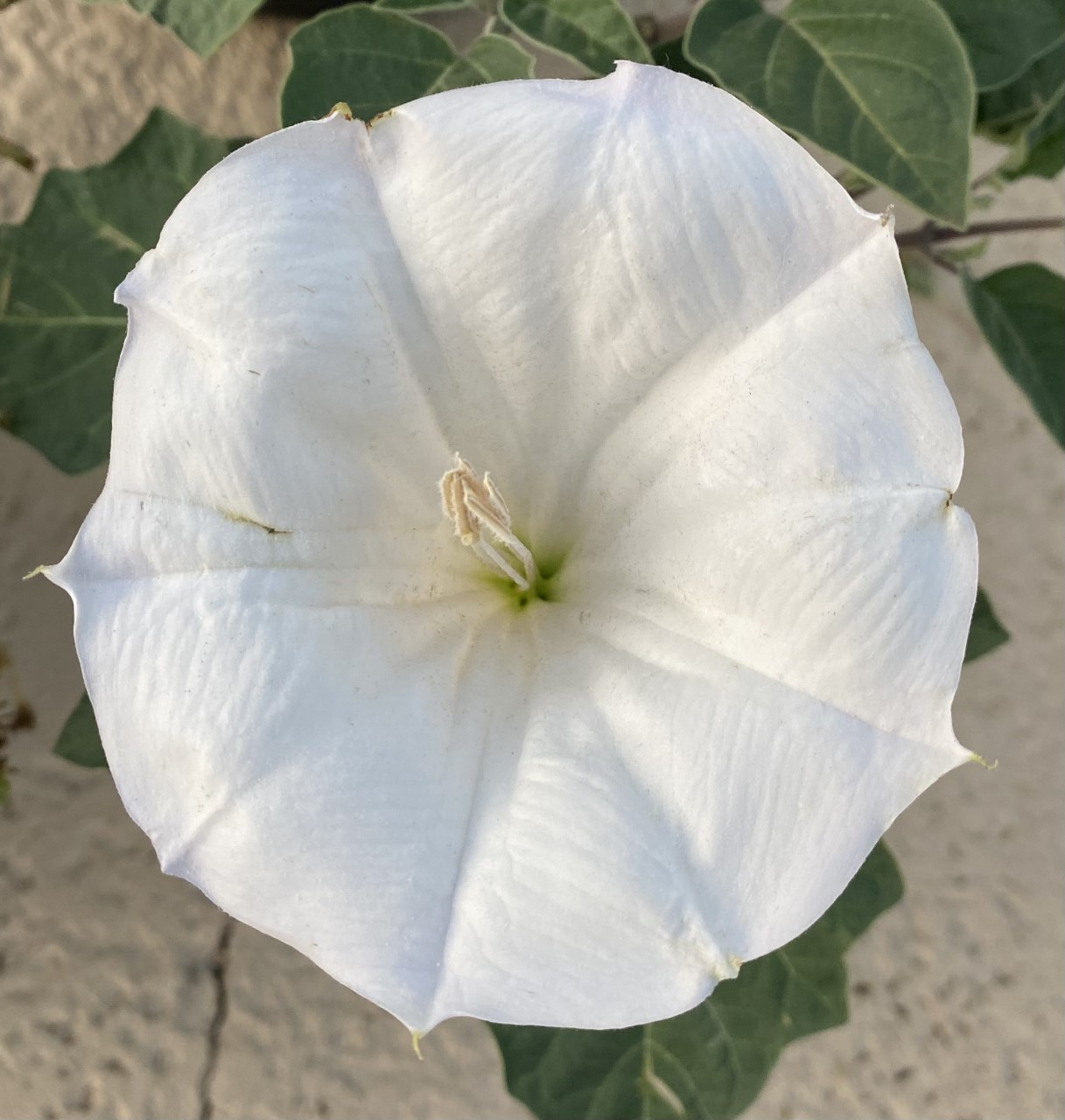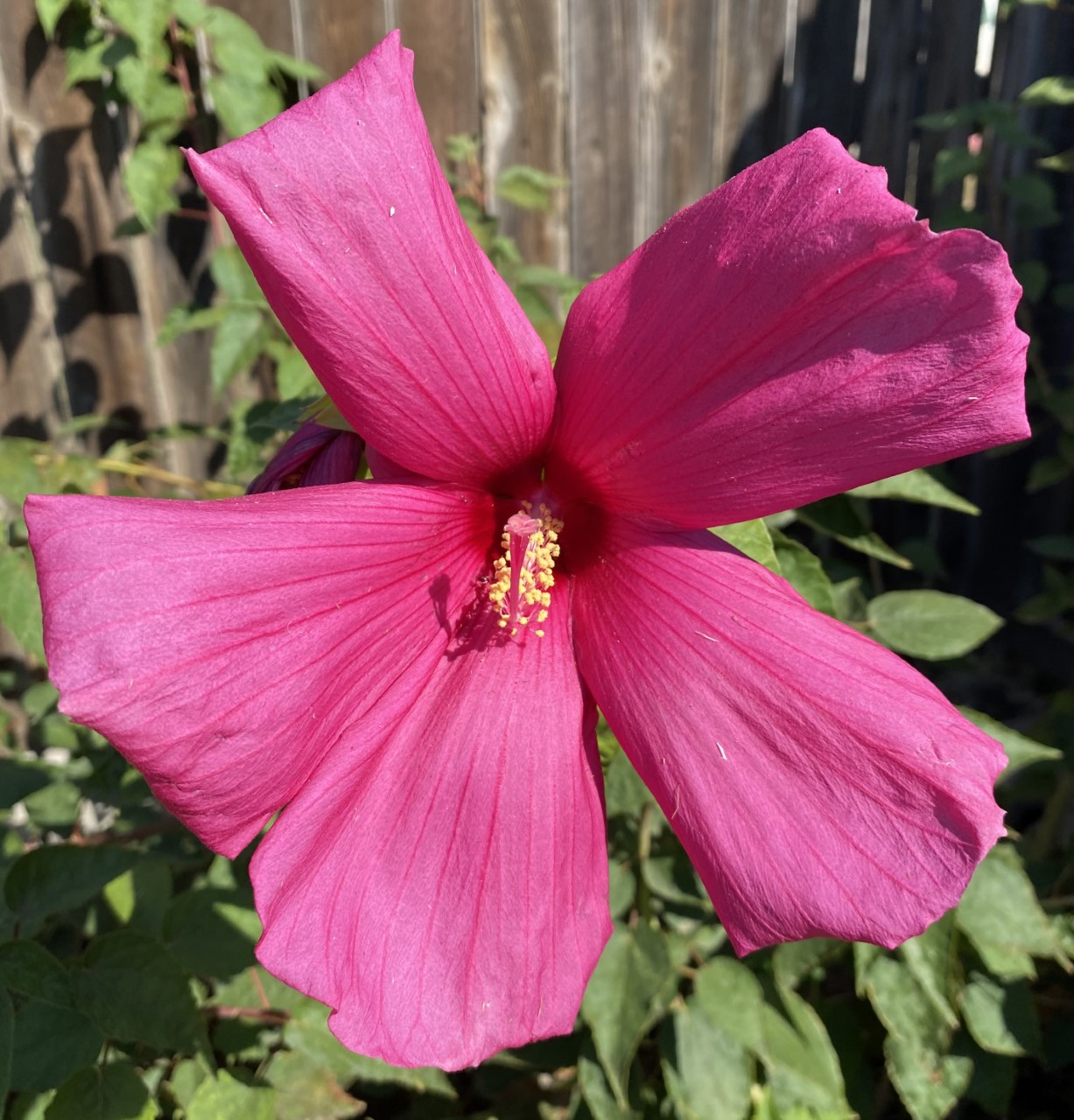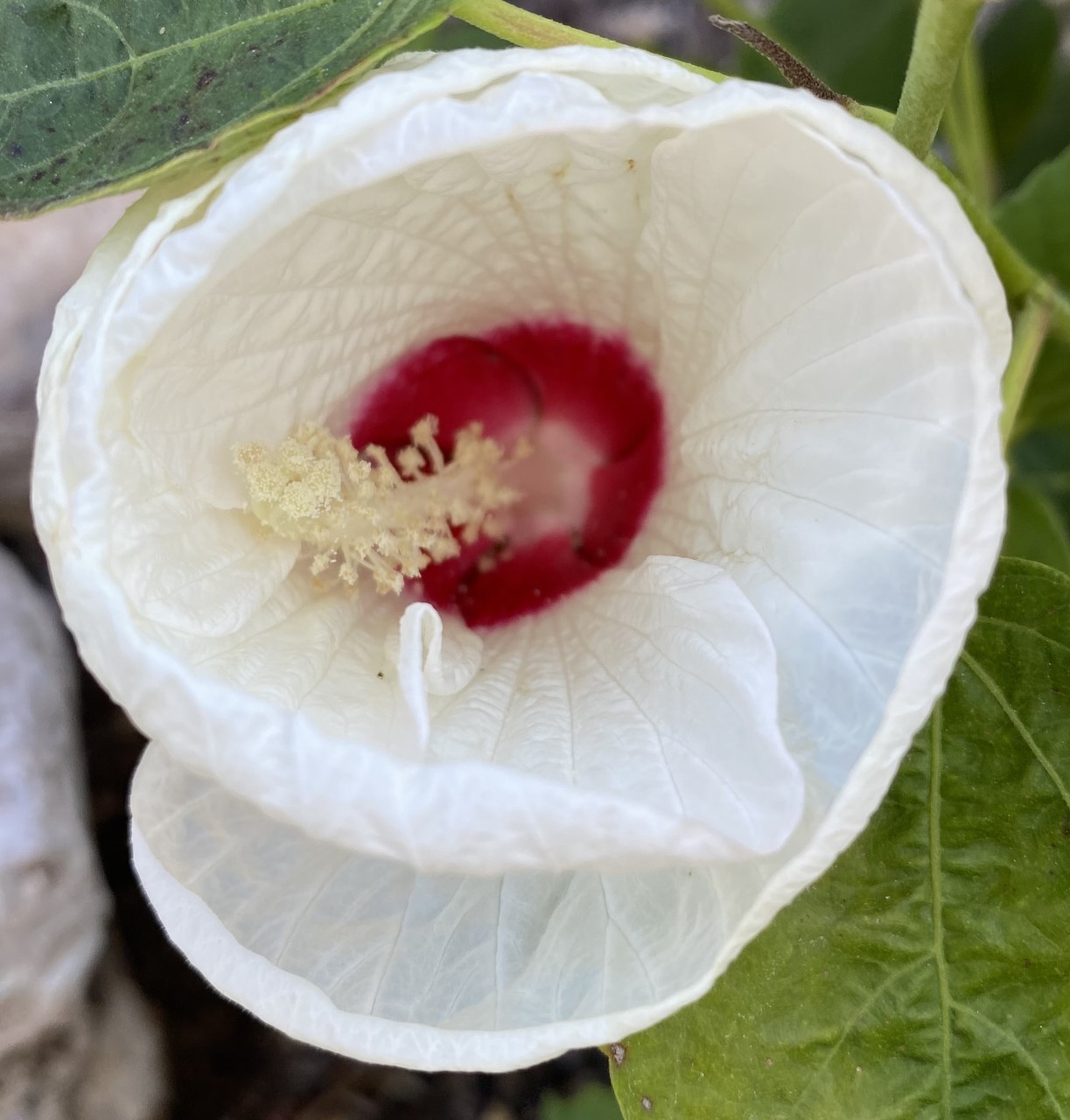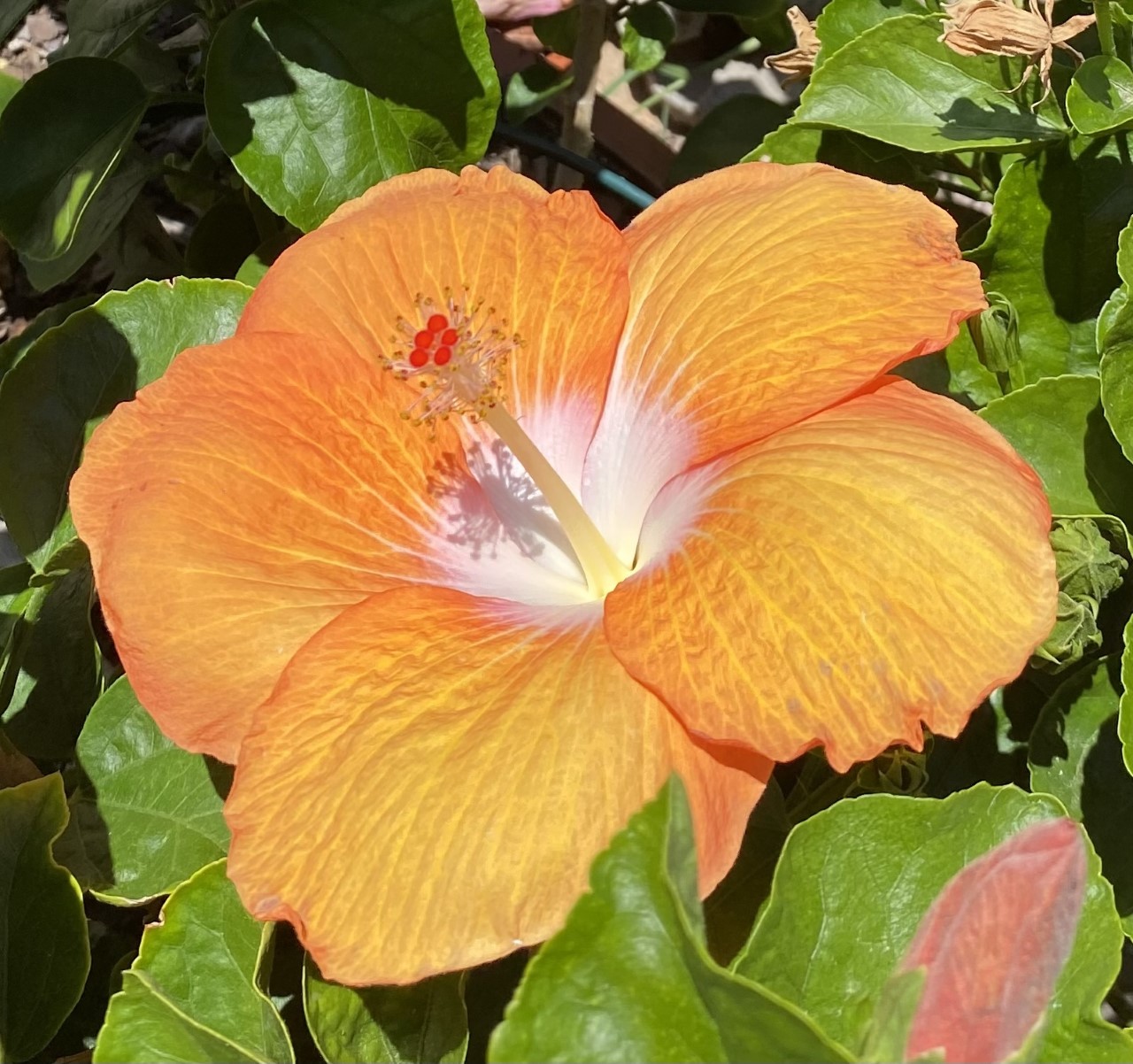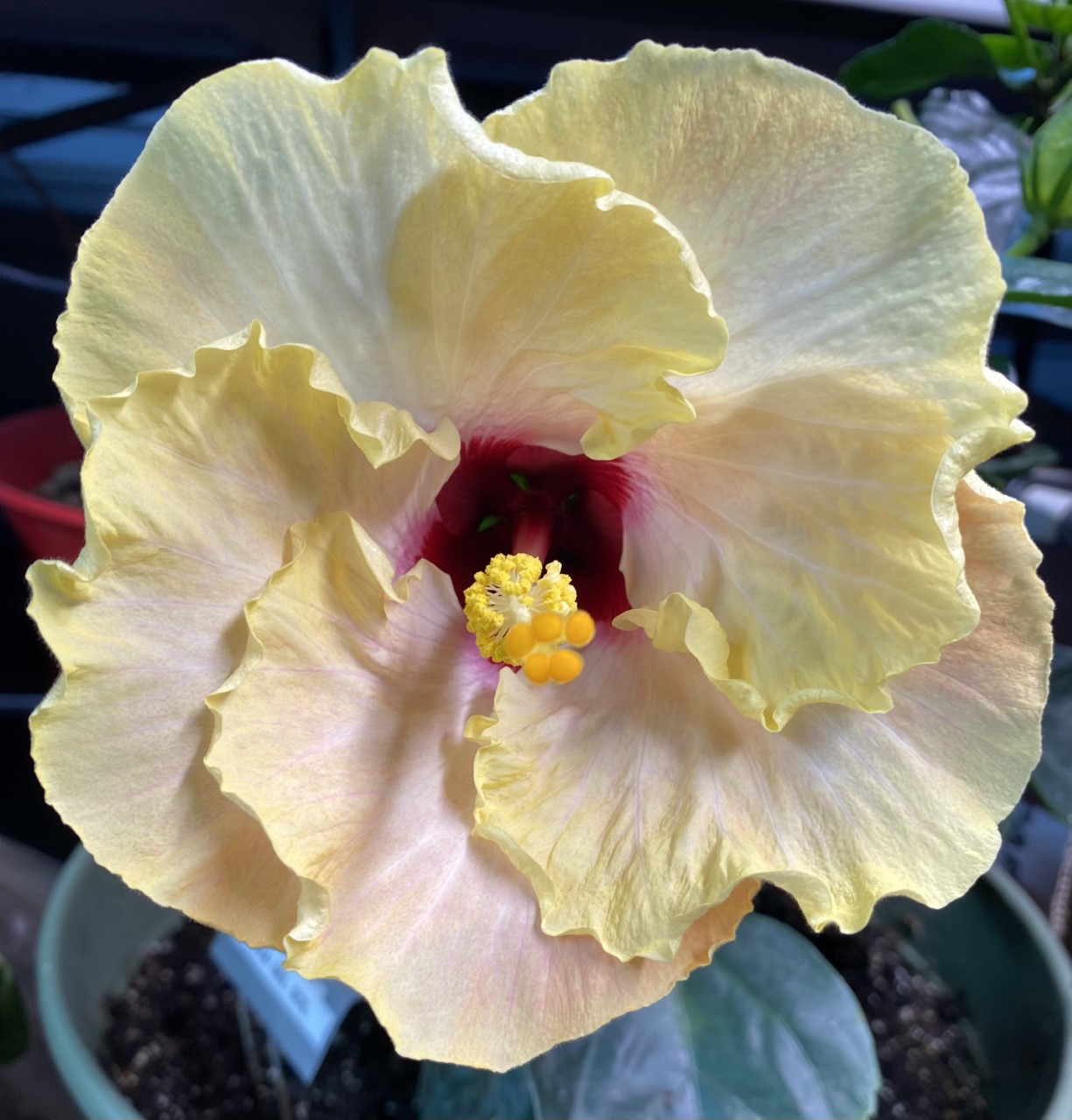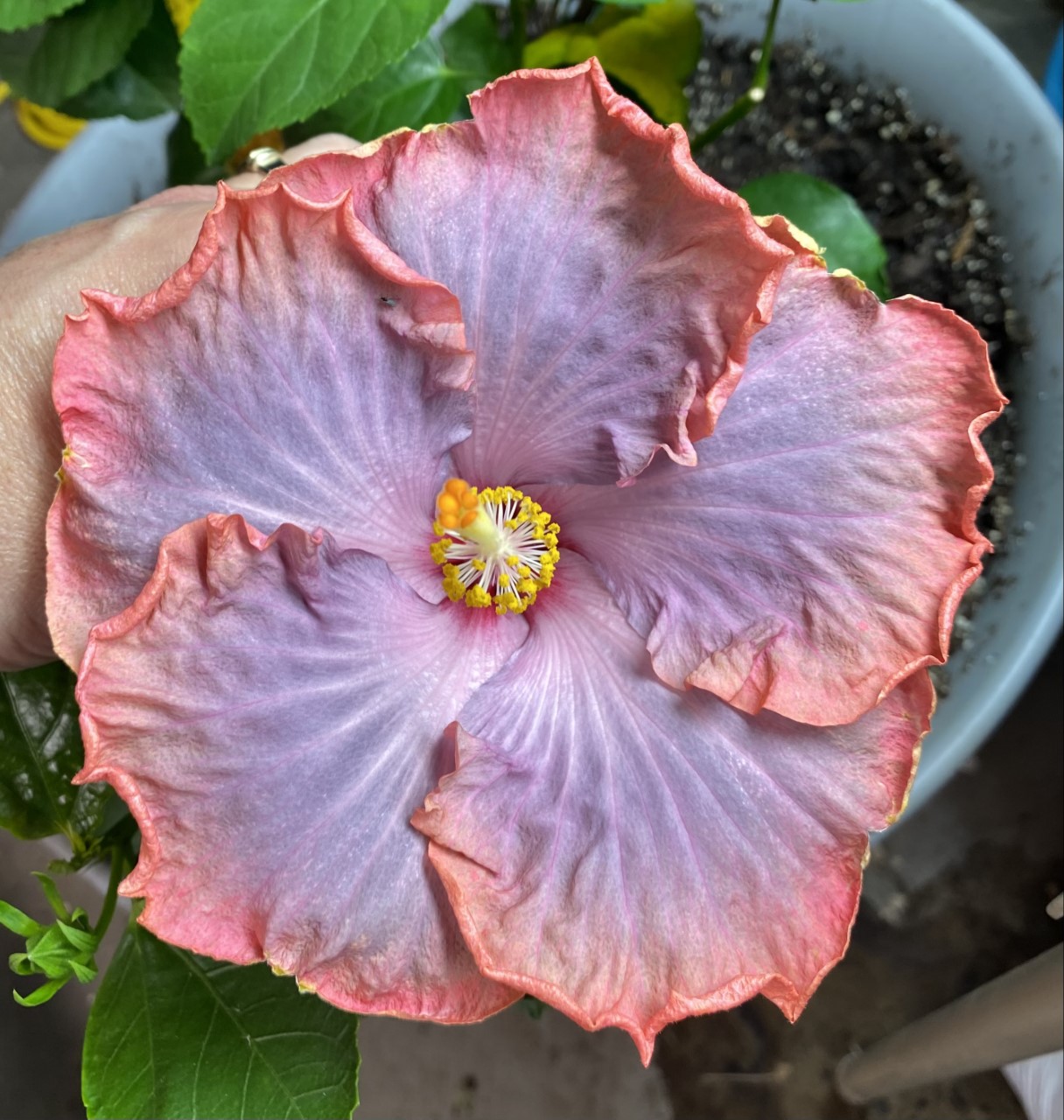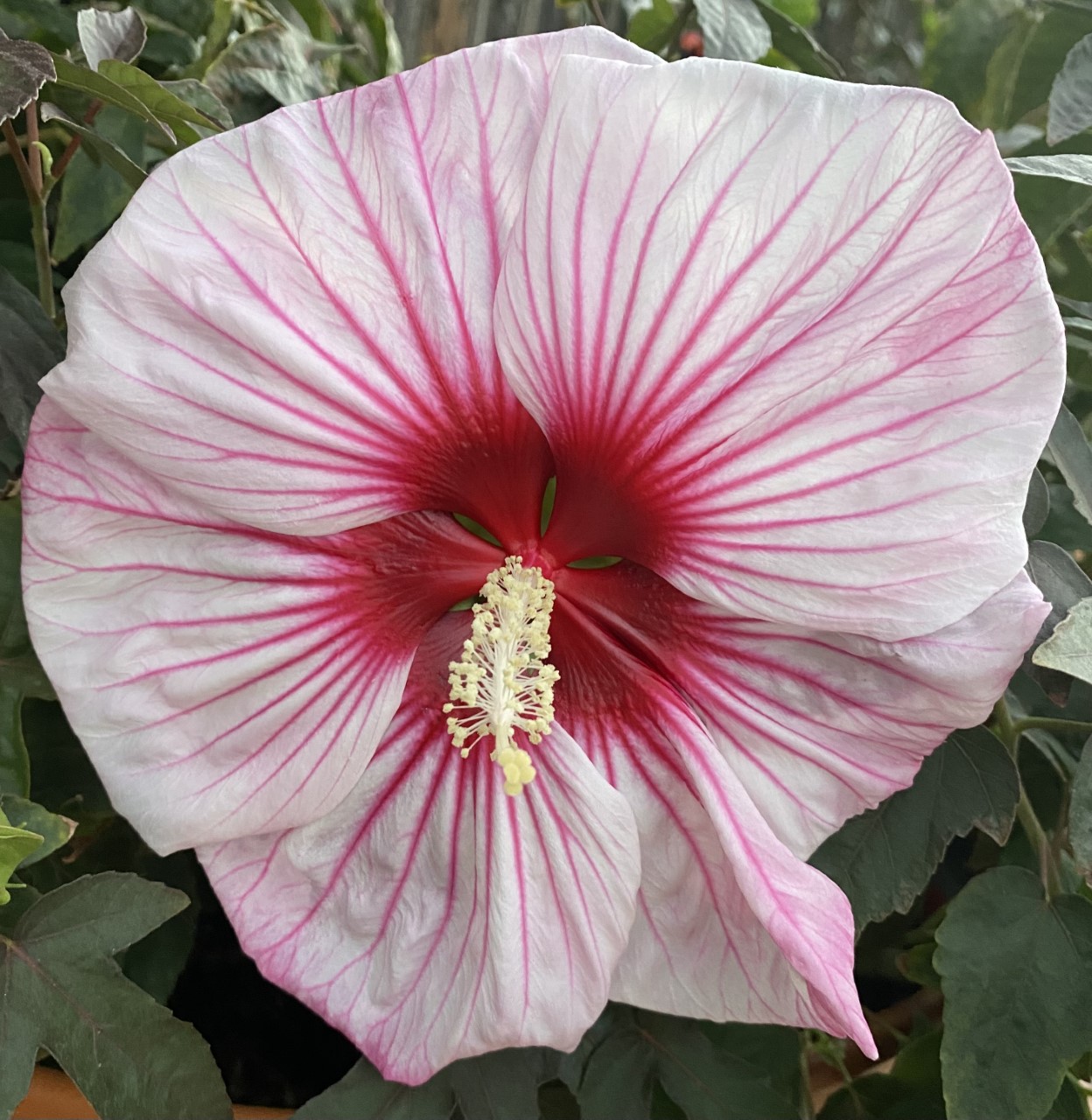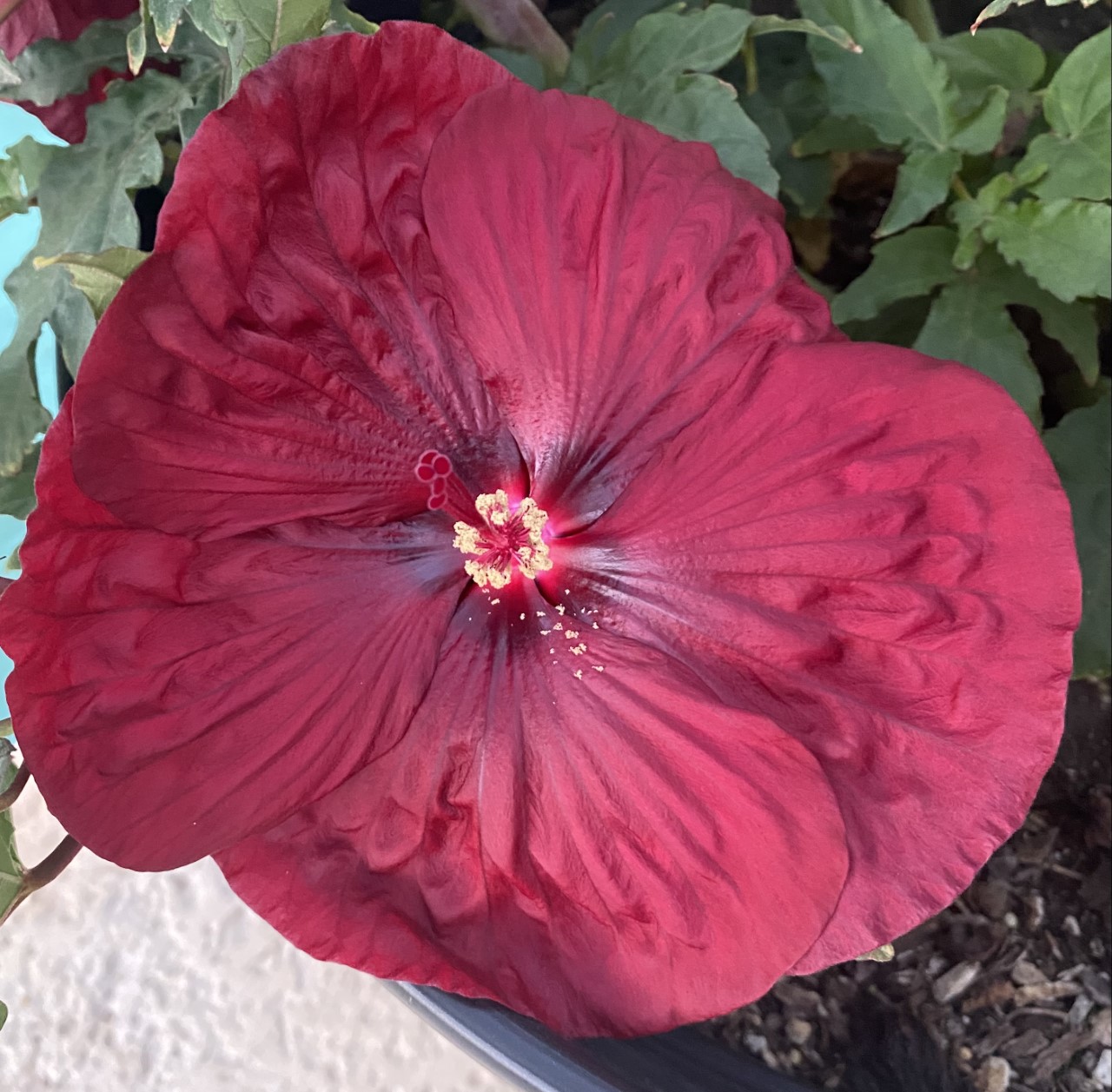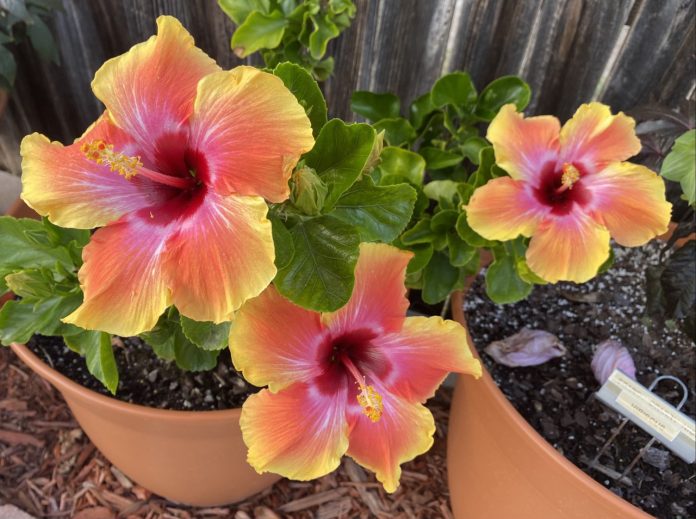
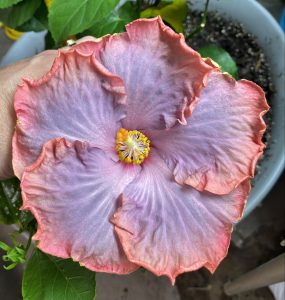
Although Dan Keast grew up on a farm in Iowa and his parents became Master Gardeners, he didn’t think of himself as having much of a green thumb.
Little did he know that the avocation would grow on him. His parents had a dwarf orchard with about 30 fruit trees that he and his brothers helped water and prune. Years later when his parents got into daylilies, Keast, and sometimes his two children, started to help out and they still do.
Keast’s passions are tea roses and hibiscus.
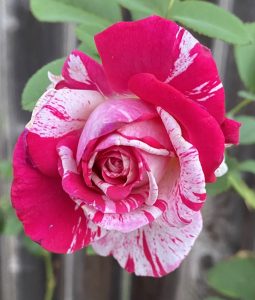
“I do roses. I’m kind of a rose snob. I don’t like the normal rose bushes everybody grows around here … I like the hybrid tea roses, which are the long-stem roses that you normally get from a flower shop. … Those are my favorites. They are more disease and pest prone so they take quite a bit more work. When you hear somebody say stop and smell the roses, there’s a reason for that. When you have a hybrid tea, you have to be on a regular basis kind of staring at them, looking at the leaves and checking on them. Otherwise you’re going to get a disease or something. If you don’t go out on a regular basis, you’re going to notice when did all these bugs get here? Dad gum they came quick,” Keast said.
“My other favorite is hibiscus. My mom is totally responsible for that one. She had one called Cherry Chocolate Latte hibiscus one summer about five years ago. I saw that thing and it was bigger than the palm of your hand. Just huge. … I just went oh my gosh, that is the biggest most beautiful … It just stood out. It was this huge thing. You could see it across the property. Oh my gosh, I said mom that is gorgeous. What is that? She goes, Oh, it’s just a dinner plate hibiscus is what it really is. But she goes it’s a pretty one, though. …,” Keast said.
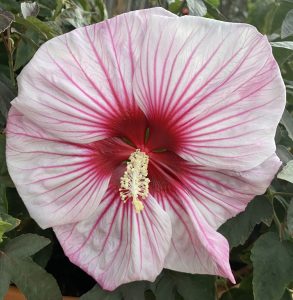
On that same trip, he and his wife, Michelle, stopped at the Henry Doorly Zoo and Aquarium and saw the same flower. Keast decided he had to get one.
“That fall, I found it online and I said I’m going to order it and I’m going to get it shipped in the spring. I ordered it and the grower cancelled it as a crop failure for the spring. So I didn’t get it that spring and I had to go another year. That next year I got it, finally. So it’s only been about three years that I’ve actually had it and it started my progression into hibiscus. … Then last year I picked up about another 10 or 12 that I liked and picked up about another 15 over this winter. I think I’ll have about 50 hibiscus this year. They are really just amazing when some of them get their huge blooms. Some of them are tropical, so that’s a problem. You’ve got to bring them in in the winter. That’s where I make good friends and put them in their houses. My wife takes them to her school because she’s the assistant principal at Travis, and so I’ve been getting very nice pictures from her teacher friends…,” Keast said.
The teachers ask if they can take the flowers home, but Keast wants them to stay at school. He noted that they are beautiful and they’ll bloom year-round.
“Two or three of them have been blooming really well at Travis Elementary. They just love it. Michelle is taking care of it for me. She knows to watch for certain bugs. Every once in a while she’ll say I think it’s getting gnats or something. So then on a Saturday I’ll go in and spray it with a little bit of a repellent,” Keast said.
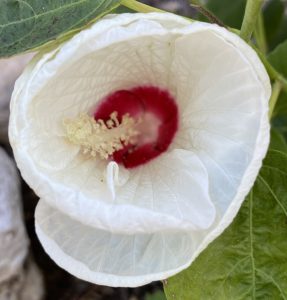
A friend recently told him that self-rising flour works as a bug repellent because the bugs eat the flour, it rises and stops them up and they die. He tried it and it works.
Keast said he doesn’t have a huge yard like you’d think. Hibiscus do better in pots. He said you can plant hardy hibiscus in the ground here and they’ll be OK. In the winter, he puts the flowers in his garage and waters once in a while so they don’t get too dry.
When it starts getting warm outside, he sets them on the side of the house and starts watering them a little bit more and they’ll perk up. He thinks he should see some growth around April 1.
The tropical hibiscus have been in the garage under grow lights, in the window of his office at the Wagner Noël Performing Arts Center, or at Travis. They also may be placed with someone else that he trusts.
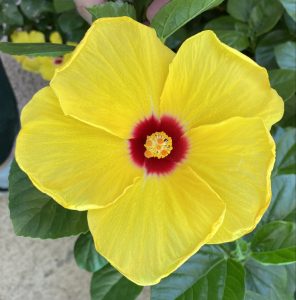
You can also put them in a greenhouse, especially if it’s in the 30s. But he likes to keep them in his office in this west-facing window with a drip tray under them.
When he goes away, he has to have someone he trusts look after the flowers.
Having the flowers is also therapeutic. Some days he’ll get home from work, come in the front door and go right out the back to check on his “babies.”
“When it gets to be bloom season in late June through September it’s great. I wake up in the morning, jump right out of bed and start running to the back door to see which one’s blooming. I kind of know the day before who’s going to bloom because I can kind of see who’s going to open the next day, so I get kind of excited about that,” Keast said.
Growing flowers also helps his teaching because it gets him away from his work. He used hybridizing flowers as a teaching technique once.
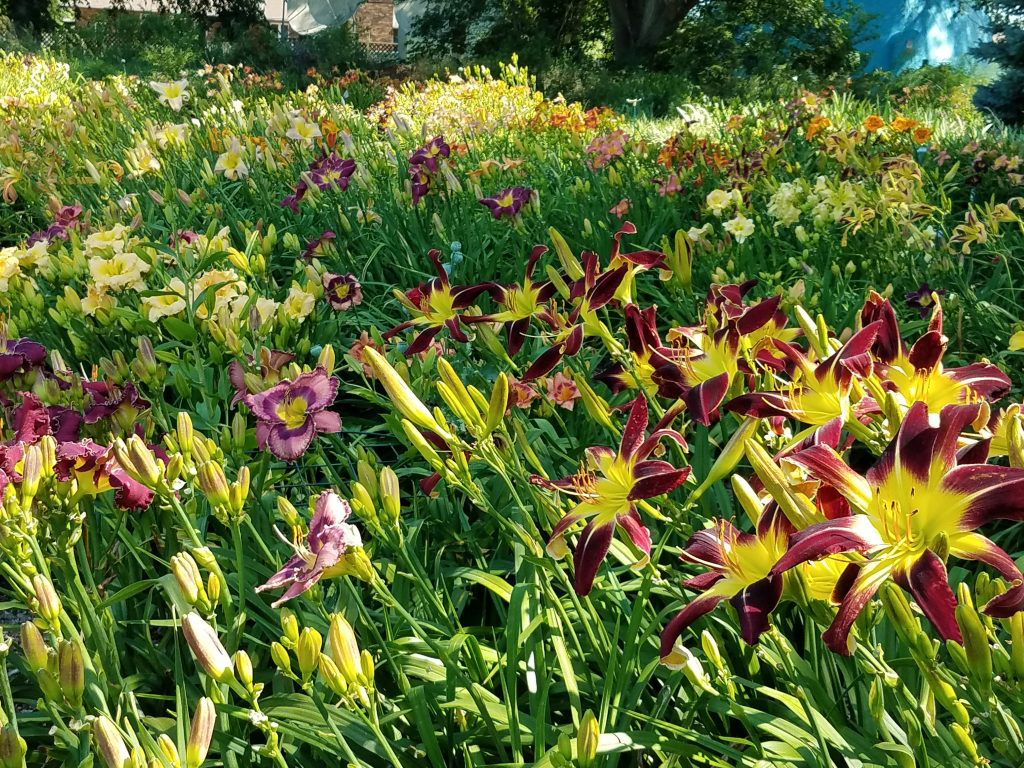
His parents have open gardens in July in Oakland, Iowa, and there are thousands of blooms every day.
“It’s breathtaking; every color. It’s mind boggling, it’s gorgeous. The photographers in the area just go berserk. They all want to do their wedding photos up there. They want to do their engagements; senior pictures. And my parents don’t charge sitting fees …,” Keast said.
“They get more per acre than any other farmer in Iowa by growing daylilies,” he added.

